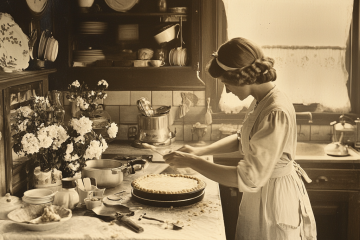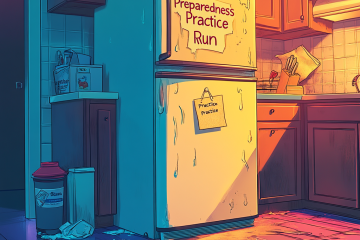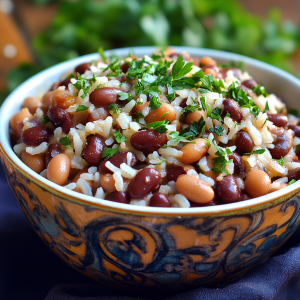
Beans and rice form the perfect protein
Beans, Beans, The Magical Fruit: A Guide to Cooking Them Without Burning Through Your Fuel
Let’s talk about beans – those humble little powerhouses that have probably taken over half your storage space. If you’re like most preppers, you’ve got enough beans squirreled away to feed a small army. But here’s the million-dollar question: how do you cook those bad boys without burning through your precious fuel supplies faster than a teenager goes through their phone battery?
The Art of Being Lazy (Yet Smart) About Bean Cooking
Remember your grandmother’s seemingly odd habit of wrapping her bean pot in quilts and tucking it into bed like a cherished child? Turns out Grandma wasn’t losing her marbles – she was actually a genius practicing what we now call thermal cooking or the “Wonder Box” method. This technique uses about as much active fuel as it takes to boil your morning coffee, then lets good old physics do the heavy lifting.
Here’s the deal: You bring your beans and water to a boil for about 10-15 minutes (just enough time to question all your life choices that led to storing so many beans), then snuggle that pot into an insulated container. This could be anything from a purpose-built thermal cooker to a couple of pillowcases stuffed with styrofoam beads, or even that sleeping bag your teenager refuses to take camping anymore. Let it sit for 4-8 hours, and voilà – perfectly cooked beans with minimal fuel usage.
Cooking with That Giant Fusion Reactor in the Sky
Why burn your own fuel when there’s a massive nuclear reactor floating overhead? No, I’m not talking about your neighbor’s questionable home experiments – I’m talking about the sun! Solar cooking is like having a slow cooker powered by that big ball of fire in the sky. Sure, it takes longer than traditional methods, but hey – good things come to those who wait (and those who don’t want to waste fuel).
You can use anything from a fancy commercial solar oven to a DIY setup that looks like it came from your kid’s science fair project. Just remember to start early in the day, unless you’ve figured out how to convince the sun to work overtime.
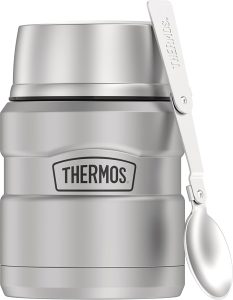
Thermos cooking is a great way to cook beans without wasting fuel
The Thermos Trick: For Those Who Like Their Beans Like Their Coffee – Hot and in a Thermos
If cooking for an army isn’t your style, the thermos method might be your new best friend. It’s perfect for small batches and uses about as much fuel as it takes to heat water for your morning coffee (sensing a theme here?). Simply heat your water, add a quarter cup of pre-soaked beans per cup of water to a good thermos, and let time do its thing. Eight to twelve hours later, you’ve got perfectly cooked beans while using about three minutes worth of fuel. It’s like magic, only more scientific and less likely to get you burned at the stake.
Pressure Cooking: For the Speed Demons Among Us
For those who think patience is overrated, there’s always pressure cooking. It’s like strapping a rocket to your beans – they cook 60-70% faster than traditional methods. Plus, pressure cookers work on practically any heat source, from your fancy stovetop to that rocket stove you built in the backyard (much to your HOA’s dismay). Pressure cookers help you conserve fuel overall and retain more nutrients. So I’d consider investing in one for all of your cooking.
Pre-Processing: Because a Little Prep Goes a Long Way
Want to really minimize cooking time? Try sprouting your beans. It requires zero fuel, increases nutrients, and reduces cooking time by half. Plus, it makes you feel like a proper homesteader, even if you’re just growing sprouts in your apartment kitchen. If sprouting isn’t your thing, try an extended soak – it’s like sending your beans to a spa retreat before cooking them.
The “Oh Crud, We’re Really Out of Fuel” Method
In truly dire situations, you can always grind your beans into flour and make flatbreads or add the flour to soups. Is it as tasty as properly cooked beans? About as much as a rice cake is like a chocolate chip cookie. But hey, in an emergency, it’ll keep you going.
Know Your Beans: A Speed Dating Guide to Cooking Times
Not all beans are created equal – some are speed demons while others are more… shall we say, high maintenance. Let’s break this down into what I like to call the “Dating Game of Beans”:
The Quick and Easy Types (First Date Material)
Think of these as the low-commitment beans. They’re ready to go steady with minimal time investment:
- Lentils (The speed-dating champion of the bean world)
- Split peas (Already split for your convenience – how thoughtful!)
- Mung beans (The overachiever of the bean family. I love these as sprouts!)
- Black-eyed peas (Quick-cooking and lucky on New Year’s – what’s not to love?)
These lovely legumes will have dinner on the table faster than you can say “where did I put my emergency manual?”
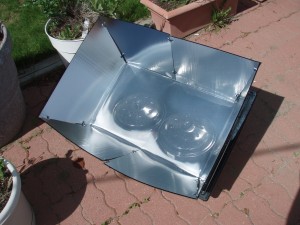
cooking beans in the solar oven conserves fuel
The Middle-of-the-Road Crowd (Steady Relationship Material)
These beans need a bit more time to open up, but they’re worth the wait:
- Black beans (The reliable type that never lets you down)
- Pinto beans (Perfect for when you’re in it for the medium-haul)
- Navy beans (Don’t let the military name fool you – they’re quite civilized)
- Great Northern beans (Not as quick as their southern cousins, but still reasonable)
The Long-Term Commitment Beans (Marriage Material)
These are the beans that require real dedication. Pack a book, because you’ll be here a while:
- Kidney beans (High-maintenance, but worth it for the right chili)
- Garbanzo beans/chickpeas (The divas of the bean world)
- Lima beans (Named after a capital city, and they demand capital-city patience)
- Soybeans (The marathon runner of beans – settling in for the long haul)
Remember, these timelines are like dating profiles – slightly optimistic under perfect conditions. Add extra time for altitude, hard water, or beans that have been sitting in your great-aunt’s basement since the Carter administration.
Safety First (Because Nobody Wants Bean-Related Regrets)
A quick but important note: some beans, particularly kidney beans, need to boil for at least 10 minutes to neutralize toxins. Unless you enjoy quality time in your bathroom, don’t skip this step. When in doubt, cook longer rather than shorter – no one ever complained about beans being too well-done, but undercooked beans can turn your digestive system into a percussion ensemble.
The Grand Finale
Remember, the goal here isn’t just to cook beans – it’s to cook them efficiently while keeping enough fuel in reserve for when you really need it. Whether you’re prepping for the zombie apocalypse or just trying to reduce your carbon footprint, these methods will help you make the most of your resources.
And hey, if all else fails, you can always convince yourself that crunchy beans are just a new food trend. After all, if people can make kale chips popular, anything is possible.
Keep experimenting with these methods until you find your groove. After all, practice makes perfect, and you’ve got enough beans stored to practice with anyway, right?
